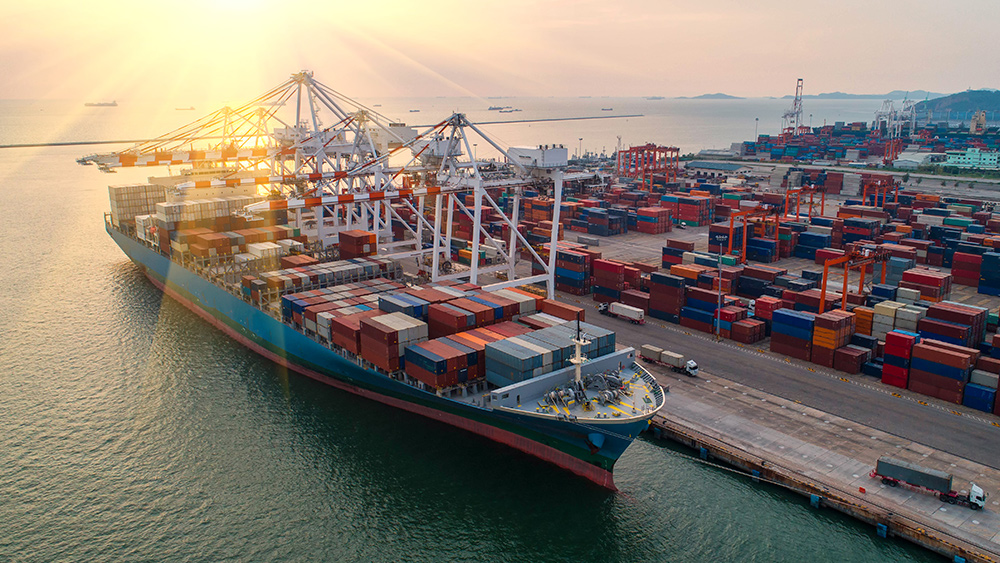
- The IMO introduced a carbon tax on maritime emissions, set at 100-380 per ton for ships exceeding thresholds (phased in by 2027). Revenue ($11–13B annually) will fund green shipping tech and aid developing nations, though critics call it insufficient.
- The measure split nations: 63 (EU, China, South Africa) supported it; 16 (Saudi Arabia, Russia) opposed it; and 25 (Pacific islands, others) abstained, citing weak emission cuts and exclusion from negotiations. Vulnerable states lamented its inadequate climate protections.
- The U.S. rejected the tax as "unfair," warning of retaliatory measures. Critics argued it burdens supply chains, raises consumer costs and encroaches on national sovereignty, favoring unilateral over international mandates.
- Some NGOs praised the tax as progress but demanded stricter fuel standards, while others (e.g., Opportunity Green) called it a "pay-to-pollute" loophole. The IMO’s emissions targets fall short of Paris Agreement goals (10% vs. 30% cuts by 2030).
- The tax reflects growing climate action but faces skepticism over efficacy and economic impacts. With final adoption in 2025, tensions will persist between decarbonization goals, energy markets and global supply chains.
Geopolitical gridlock reflects shifting energy priorities
The IMO’s vote reflected stark divisions. Sixty-three nations including the EU, China and South Africa supported the levy, while 16 — led by oil exporters like Saudi Arabia and Russia — rejected it. Twenty-five nations, including Pacific island states, abstained, citing inadequate emission cuts and exclusion from negotiations. Tuvalu’s minister for transport, Simon Kofe, lamented the deal’s “weakness,” arguing it failed to protect climate-vulnerable nations from rising seas and storms. Meanwhile, Seychelles’ Minister Antony Derjacques criticized wealthier nations for blocking proposals to reroute tax revenue to climate adaptation, stating: “How can we ask our people to accept a deal that ignores their suffering?” Yet global shipping giants and shipbuilding industries were cautiously optimistic. Norway’s negotiated compromise blended tax and credit trading mechanisms, aiming to balance cost burdens. IMO Secretary-General Arsenio Dominguez framed the pact as progress, stating: “This consensus reflects a path to modernize shipping while addressing climate imperatives.”Energy freedom advocates warn of market suppression
Conservative analysts and energy freedom advocates warned the tax risks stifling trade and misallocating resources. “This top-down approach pressures businesses without delivering measurable environmental benefits,” said Policy Analyst Mark Distler with the Energy Independence Project. “High costs will burden already fragile global supply chains, hurting consumers while enriching regulators.” Critics emphasized that shipping’s 3% emissions share makes it a small slice of the global total. “Why burden this sector alone when coal, oil and other industries dominate emissions?” asked Distler. Others noted the tax’s phase-down thresholds may permit continued reliance on fossil fuels like LNG, which environmentalists label a “bridge fuel” with questionable net benefits. The U.S. opposition underscores broader skepticism toward international mandates. “Decisions on economic regulation belong to sovereign nations, not petty U.N. bureaucracies,” argued U.S. negotiator Jessica Winslow, adding: “Forced decarbonization harms workers in diesel and maritime sectors—not to mention families facing higher prices for imported goods.”Environmentalists split on “historic” deal’s sustainability
Environmentalists offered mixed reactions. The Environmental Defense Fund’s Natacha Stamatiou praised the tax as a starting point but urged stronger fuel standards. Meanwhile, U.K.-based Opportunity Green termed it “a failure for climate-vulnerable countries,” arguing fee levels could let firms “pay to pollute” rather than innovate. The IMO’s tie to the Paris Agreement’s 1.5°C target further agitated activists. A 2023 IMO road map aimed for 30% emission cuts by 2030, but current targets would deliver just 10%. “This tax is a speed bump, not a turning point,” said pacific envoy Albon Ishoda.A divided path forward
The historic carbon tax signals global climate action, but its efficacy remains uncertain. For critics, it represents overreach in a geopolitical arena already strained by energy demands. As Secretary-General Dominguez urged broader dialogue, the U.S. pivot to unilateral measures hints at future friction. With IMO rules set for final adoption in October 2025, the struggle over economic freedom versus climate ambition promises to intensify — from shipping hubs in Singapore to supply chain corridors in Ohio. For now, the seas, like politics, remain turbulent. Sources include: YourNews.com EnviroNewNigeria.com APNews.comTrump imposes staggering 104% tariffs on all Chinese imports, escalating trade war
By Laura Harris // Share
Minnesota joins 10 other states in push to ban mRNA-based vaccines
By Ava Grace // Share
Trump administration wins court approval for sweeping immigrant registration rule
By Laura Harris // Share
Nvidia’s $500B U.S. AI bet counters China trade threats, fuels Trump’s jobs push
By Cassie B. // Share
Life expectancy in Gaza halved during first year of war, Lancet study finds
By isabelle // Share
Federal immigration officials to screen social media for antisemitism posts
By lauraharris // Share
Trump moves to cut federal funding for "death trap" sanctuary cities
By avagrace // Share
Trump imposes staggering 104% tariffs on all Chinese imports, escalating trade war
By lauraharris // Share










